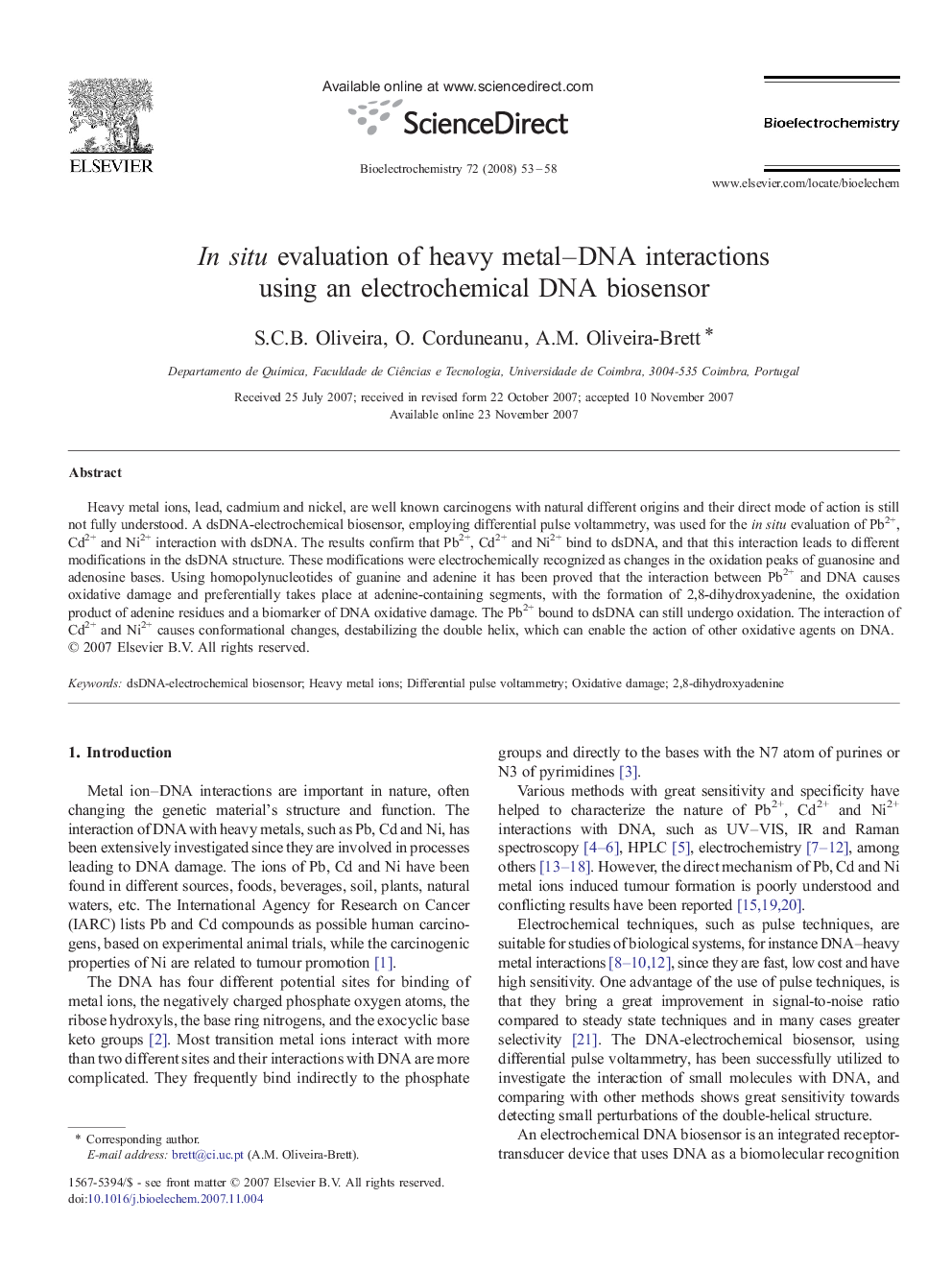| Article ID | Journal | Published Year | Pages | File Type |
|---|---|---|---|---|
| 1268915 | Bioelectrochemistry | 2008 | 6 Pages |
Heavy metal ions, lead, cadmium and nickel, are well known carcinogens with natural different origins and their direct mode of action is still not fully understood. A dsDNA-electrochemical biosensor, employing differential pulse voltammetry, was used for the in situ evaluation of Pb2+, Cd2+ and Ni2+ interaction with dsDNA. The results confirm that Pb2+, Cd2+ and Ni2+ bind to dsDNA, and that this interaction leads to different modifications in the dsDNA structure. These modifications were electrochemically recognized as changes in the oxidation peaks of guanosine and adenosine bases. Using homopolynucleotides of guanine and adenine it has been proved that the interaction between Pb2+ and DNA causes oxidative damage and preferentially takes place at adenine-containing segments, with the formation of 2,8-dihydroxyadenine, the oxidation product of adenine residues and a biomarker of DNA oxidative damage. The Pb2+ bound to dsDNA can still undergo oxidation. The interaction of Cd2+ and Ni2+ causes conformational changes, destabilizing the double helix, which can enable the action of other oxidative agents on DNA.
